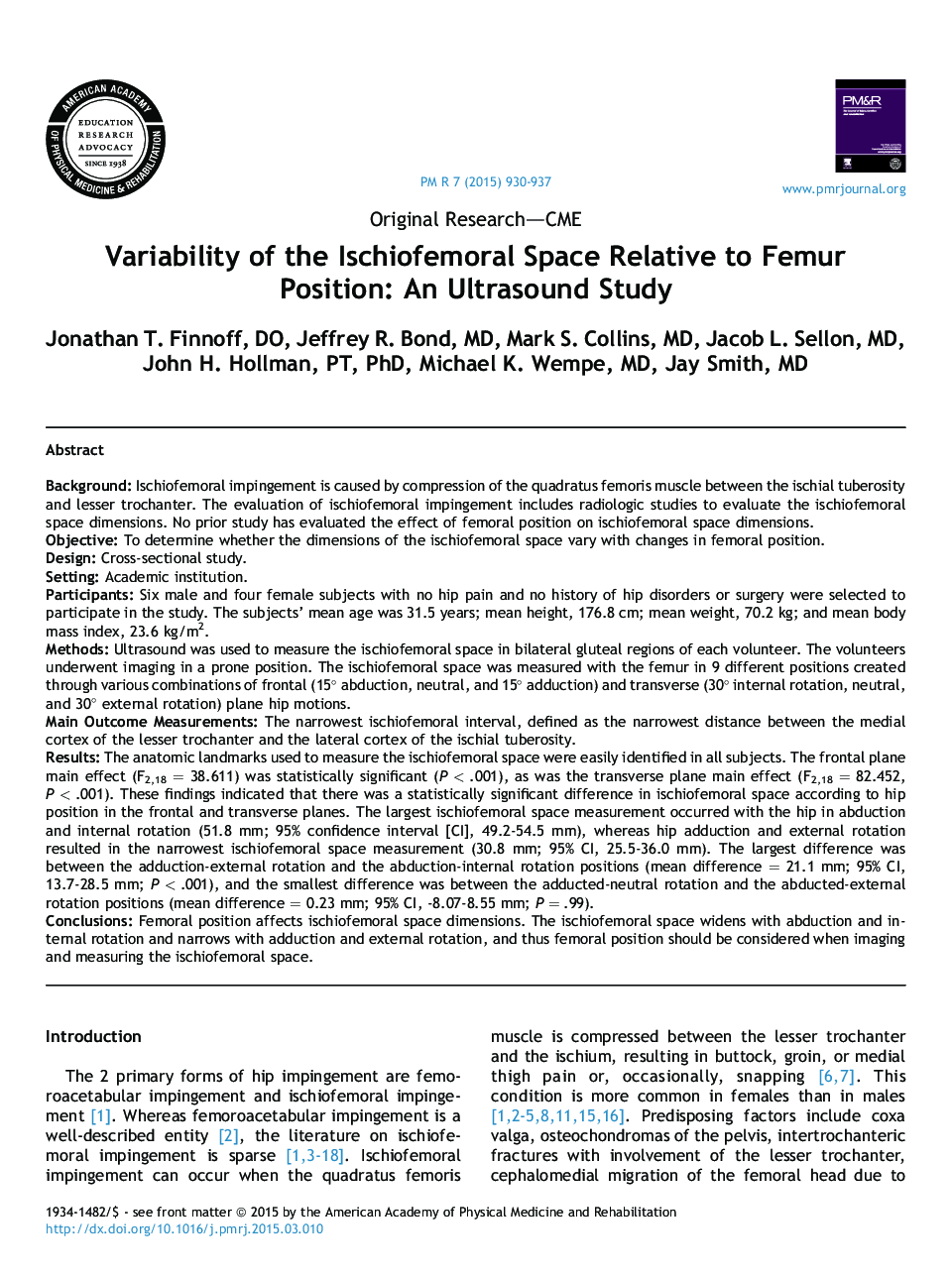| کد مقاله | کد نشریه | سال انتشار | مقاله انگلیسی | نسخه تمام متن |
|---|---|---|---|---|
| 2712052 | 1145069 | 2015 | 8 صفحه PDF | دانلود رایگان |
BackgroundIschiofemoral impingement is caused by compression of the quadratus femoris muscle between the ischial tuberosity and lesser trochanter. The evaluation of ischiofemoral impingement includes radiologic studies to evaluate the ischiofemoral space dimensions. No prior study has evaluated the effect of femoral position on ischiofemoral space dimensions.ObjectiveTo determine whether the dimensions of the ischiofemoral space vary with changes in femoral position.DesignCross-sectional study.SettingAcademic institution.ParticipantsSix male and four female subjects with no hip pain and no history of hip disorders or surgery were selected to participate in the study. The subjects' mean age was 31.5 years; mean height, 176.8 cm; mean weight, 70.2 kg; and mean body mass index, 23.6 kg/m2.MethodsUltrasound was used to measure the ischiofemoral space in bilateral gluteal regions of each volunteer. The volunteers underwent imaging in a prone position. The ischiofemoral space was measured with the femur in 9 different positions created through various combinations of frontal (15° abduction, neutral, and 15° adduction) and transverse (30° internal rotation, neutral, and 30° external rotation) plane hip motions.Main Outcome MeasurementsThe narrowest ischiofemoral interval, defined as the narrowest distance between the medial cortex of the lesser trochanter and the lateral cortex of the ischial tuberosity.ResultsThe anatomic landmarks used to measure the ischiofemoral space were easily identified in all subjects. The frontal plane main effect (F2,18 = 38.611) was statistically significant (P < .001), as was the transverse plane main effect (F2,18 = 82.452, P < .001). These findings indicated that there was a statistically significant difference in ischiofemoral space according to hip position in the frontal and transverse planes. The largest ischiofemoral space measurement occurred with the hip in abduction and internal rotation (51.8 mm; 95% confidence interval [CI], 49.2-54.5 mm), whereas hip adduction and external rotation resulted in the narrowest ischiofemoral space measurement (30.8 mm; 95% CI, 25.5-36.0 mm). The largest difference was between the adduction-external rotation and the abduction-internal rotation positions (mean difference = 21.1 mm; 95% CI, 13.7-28.5 mm; P < .001), and the smallest difference was between the adducted-neutral rotation and the abducted-external rotation positions (mean difference = 0.23 mm; 95% CI, -8.07-8.55 mm; P = .99).ConclusionsFemoral position affects ischiofemoral space dimensions. The ischiofemoral space widens with abduction and internal rotation and narrows with adduction and external rotation, and thus femoral position should be considered when imaging and measuring the ischiofemoral space.
Journal: PM&R - Volume 7, Issue 9, September 2015, Pages 930–937
